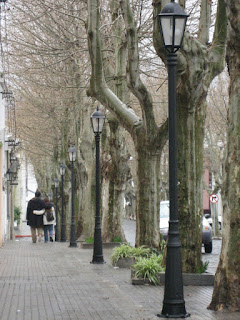A few weeks ago, I moved into my own studio, in the neighborhood of San Telmo. Or so claimed the advertisement. In actuality, my flat is a little hop South of San Telmo, in the neighborhood of Barracas. Mention the area to Porteños, and odds are they'll shake their head and the word "danger" will emanate from their mouths. So far, I've pretty much continued to assert that I live in San Telmo. It's like saying you live along the beach in San Diego, California, when you actually live just a tad downwards, in crowded Tijuana. Or something like that.
But recently, I've grown to appreciate Barracas' many charms-- strictly during the daytime, of course. I live next to a pretty, grassy park which hosts kids on carousels during the daytime, and caters to junkies at night. There is a semi-friendly Chino (a 'chino', which means Chinese, is a supermarket, a great numbero of which are owned by, you guessed it, Chinese.) There is a pastry shop, the city's main Orthodox church and a series of bus stops-- what more could a tenant possible desire?

Orthodox church. Also stunning inside.

Colonial architecture in the parque Lezama.

Parque Lezama's market, source of great temptation for this neighbor.

Parque Lezama put to good use.






















